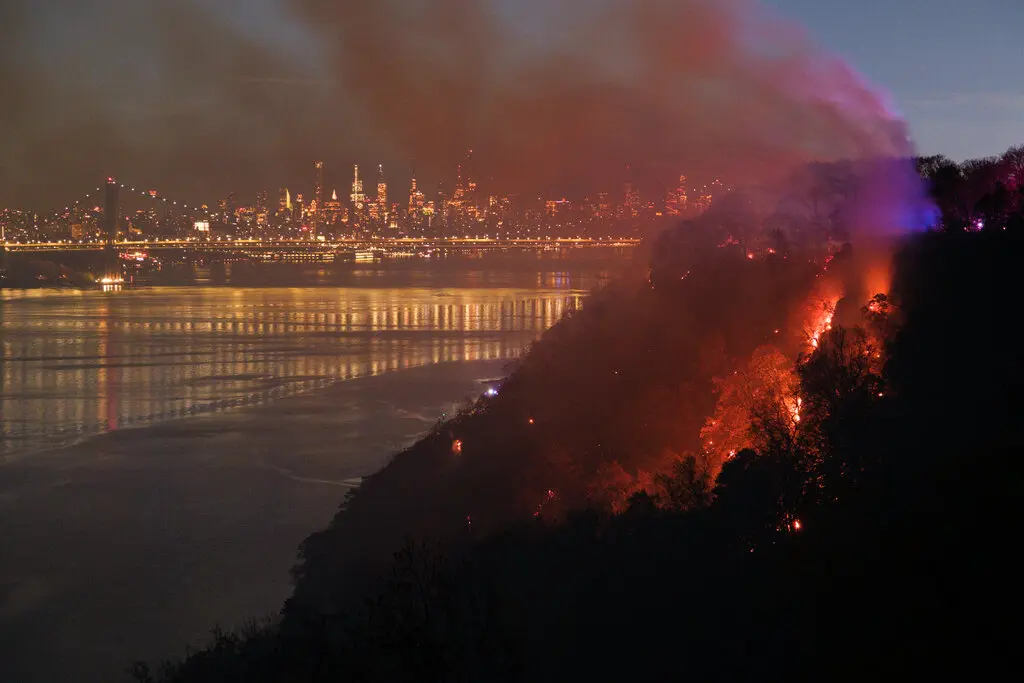New York City Faces Surge in Fires Amidst Challenging Conditions
Over the past week, New York City has grappled with a series of fires that have tested the resilience of its emergency services and highlighted critical issues related to fire safety and infrastructure. From tragic fatalities to operational challenges, these incidents underscore the city’s ongoing battle against fire hazards.
Fatal Blaze in the Bronx
On February 12, 2025, a devastating three-alarm fire erupted at 2064 St. Anthony Avenue in the Bronx, claiming the lives of two individuals. The fire, which engulfed a Buddhist temple and a nearby residence, was exacerbated by parked vehicles obstructing fire hydrants, delaying firefighting efforts. Fire Department sources reported that the victims, including a monk, were found trapped inside the building. The blaze’s rapid spread and the challenges posed by blocked hydrants have reignited discussions on the importance of keeping fire hydrants accessible to ensure timely emergency responses.
Tragic Death in Brooklyn
In a separate incident, a fire broke out on February 18, 2025, in a Brooklyn building with a history of arson. The fire resulted in the death of a woman in her 40s, who was found deceased in an alley behind the two-story structure. The building had experienced five previous fires in the past two years, one of which was confirmed as arson by a previous squatter. The owner had moved out to renovate the property but was continually hindered by squatters. The cause of the recent fire is still under investigation.
Wildfires in New Jersey and New York
Beyond the city limits, the region has been battling wildfires that have raised concerns about air quality and public safety. In New Jersey, the Jennings Creek Fire has burned 3,500 acres in the West Milford area, with only 20% containment as of the latest reports. The fire has threatened structures in both New Jersey and adjacent Greenwood Lake, New York. The cause of the fire remains under investigation, and officials are working tirelessly to contain the blaze.
Challenges with Blocked Hydrants
A concerning trend has emerged regarding blocked fire hydrants. Complaints about parked cars obstructing hydrants have more than doubled since the pandemic, soaring from 11,886 reports in 2014 to over 100,000 annually from 2020 onwards. This surge is attributed to the increase in bike lanes and a decrease in police enforcement, leading to slower responses to parking violations. Serious incidents, including fatal fires in Brooklyn and the Bronx, have seen delays in firefighting efforts due to blocked hydrants. In response, legislation is being considered to impose harsher penalties for blocking hydrants, such as increasing fines from $115 to $1,000, and enabling citizens to submit video evidence of violations for automatic citations.
Firefighter Injuries and Fatalities
The past month has also seen incidents where firefighters have been injured or lost their lives in the line of duty. In Binghamton, New York, firefighter John R. Gaudet, aged 40, died after a wall collapsed while he was battling a major downtown fire. Two other firefighters sustained injuries but were later discharged from the hospital. This tragedy highlights the inherent dangers faced by firefighters and the critical need for ongoing training and safety measures.
Lithium Battery Fires
Another pressing concern is the rise in fires caused by lithium batteries, particularly from e-bikes and other devices. In January 2025, a fire in a Queens townhouse injured three residents and a firefighter. The blaze was sparked by a lithium battery, underscoring the dangers associated with improper handling and storage of these batteries. New York City enacted a law in September 2023 to control the rental and distribution of non-approved lithium battery-powered mobility devices like scooters and e-bikes.
Community Response and Support
In the wake of these incidents, community organizations and residents have rallied to support affected individuals and families. Following a catastrophic fire in the Bronx in January 2025, nearly $400,000 in donations were raised to assist those impacted. These funds have been allocated for food, funerals, flights, and direct cash relief, demonstrating the community’s resilience and solidarity in times of crisis.
Conclusion
The recent spate of fires in New York City and its environs serves as a stark reminder of the multifaceted challenges in fire safety and prevention. From tragic losses and firefighter injuries to operational hurdles like blocked hydrants and the dangers of lithium batteries, these incidents highlight the urgent need for comprehensive fire safety measures, public awareness, and community engagement. As the city continues to confront these challenges, the collective efforts of emergency services, policymakers, and residents will be crucial in mitigating risks and enhancing fire safety across the region.


